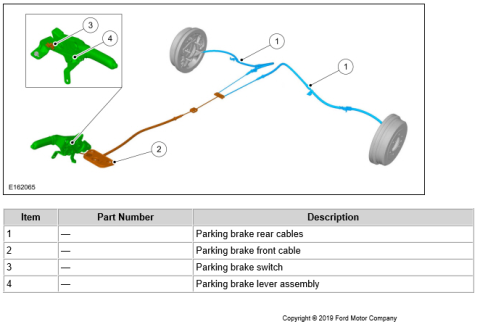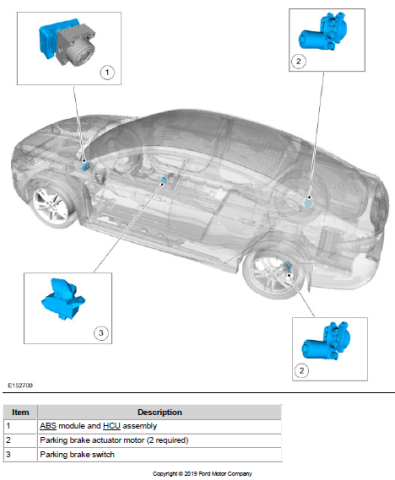How does a handbrake cable work?
A handbrake (also known as the Park or Parking brake) is normally a mechanical braking system that can bypass the primary hydraulic brake system should it fail. The system usually consists of a cable directly connected to the brake mechanism on one end and to a lever or foot pedal at the driver's position.
When the handbrake is applied, the brake cable passes through an intermediate lever which increases the force of the pull. This force is then split evenly between the rear brakes by an equaliser.
The purpose of the handbrake is to ensure the vehicle does not roll away when parked, although it can also be used as a backup or secondary braking system in the rare event that the primary brake system should fail.
A sample diagram (from a 2016 Ford Ranger) is included below:

Fully electric parking brakes are now commonplace also. These replace the mechanical system above with an electric one. The Anti-Lock Braking System (ABS) module monitors and controls the parking brake system. The parking brake switch sends a message to the ABS module when the driver moves the parking brake switch to the APPLY position, which tells the user a sensor to check if the parking brake can be applied and then operates the parking brake actuator motors.
Once the parking brakes are fully applied, the ABS module sends a message to the vehicle's instrument panel which illuminates the red BRAKE warning indicator. If the red BRAKE warning indicator is already illuminated due to a non-parking brake concern, the instrument panel displays PARK BRAKE APPLIED in the message center.
When the driver moves the parking brake switch to the RELEASE position, the message is sent back to the ABS module indicating a RELEASE request. The ABS module then checks the ignition state and position of the brake pedal to determine if the parking brakes can be released. If all is OK, the ABS module then tells the parking brake actuator motors to release the brakes and a message is sent back to the instrument panel for it to turn off the BRAKE warning indicator lamp.
Automatic Release
The parking brakes are designed to automatically release under certain circumstances.
For vehicles equipped with an automatic transmission:
- The driver door must be closed.
- The driver safety belt must be fastened.
- The engine must be running or the green 'Ready-to-Drive' indicator must be illuminated.
- The transmission must be in any forward gear or REVERSE.
For vehicles equipped with a manual transmission:
- The driver door must be closed.
- The engine must be running.
- The clutch pedal must be pressed
Once all the conditions have been met, the parking brake releases automatically when the accelerator pedal is pressed. A vehicle driving away up an incline requires more accelerator pedal input than a vehicle driving away down an incline.
A sample diagram from a 2018 Mondeo Titanium is included below.
